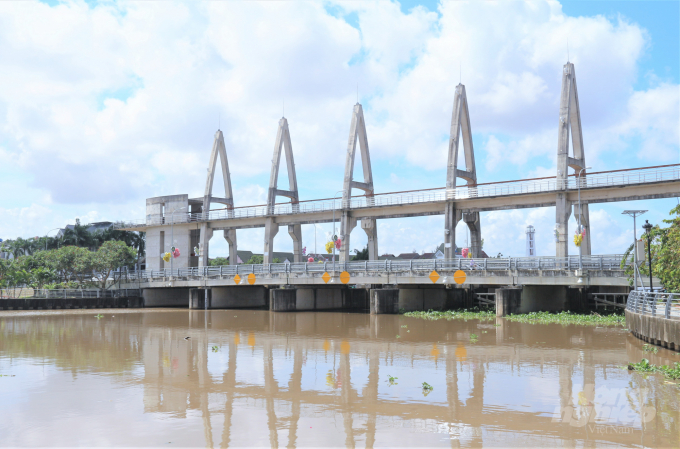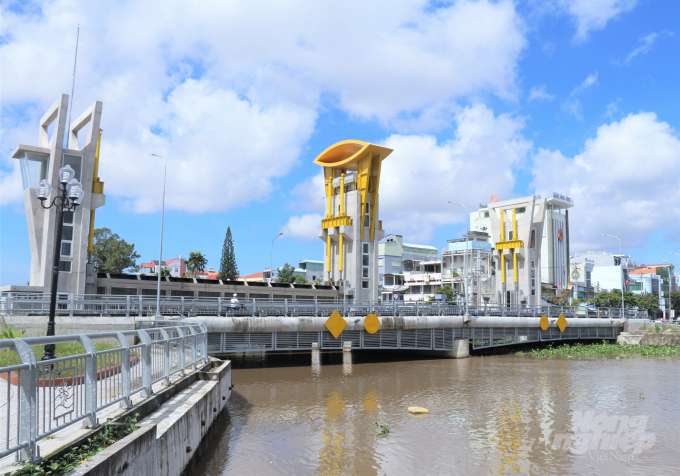November 27, 2025 | 17:44 GMT +7
November 27, 2025 | 17:44 GMT +7
Hotline: 0913.378.918
November 27, 2025 | 17:44 GMT +7
Hotline: 0913.378.918
The conclusion underlined that the mission of guaranteeing water source security and dam, reservoir safety had been constrained. The management of water sources has been inadequate and ineffective; the awareness and responsibility of several agencies, units, localities, and individuals in managing, exploiting, and using water have not been raised, and water source contamination has become more severe.
The legal, procedural, and policy framework for ensuring the security of water sources and the safety of dams and reservoirs is poor and inconsistent. A number of waterworks have deteriorated, resulting in rising concerns of insecure water sources and unsafe dams and reservoirs. The assurance of water security has not been attached to the development of industry and urban areas, resulting in a decline in the quality and volume of water sources and even the insecurity of water sources. The international cooperation efforts to ensure water security have been ineffective.

By 2025, it is necessary to complete the formulation of national sectoral master plans, master plans with specialized technical nature related to water. Photo: Pham Hieu.
The Politburo establishes broad goals to ensure the volume and quality of water serving livelihoods in all circumstances, meeting the water demands for production, business in commodity industries, particularly in key industries; all people are able to access and use water sources, efficient exploitation and use attaching to the safety of dams and water reservoirs; effectively respond to disasters, water-related disasters, adapt to climate change; and protect the environment.
By 2025, it is essential to establish plans of national industry and technical planning specifying water; as many as 95 percent of urban family households and 60 percent of rural ones use standardized clean water; essentially handling the situation of water shortage, water for production, particularly in the provinces of Mekong Delta, the Central Highlands, the South Central, and Northern mountainous areas; essentially repairing, upgrading, and ensuring the safety of dams and reservoirs.

By 2030, it is necessary to balance water sufficiency to serve the people's livelihood and socio-economic development. Photo: Pham Hieu.
By 2030, 100 percent of urban family households and 80 percent of rural family households will be able to access standard, clean water, balancing water sufficiency supporting livelihoods and socio-economic development.
According to Conclusion, it aims to manage domestic water for populous islands by synchronizing the system of salt water and fresh water management works, water storage along the major river basins and repairing and upgrading dams and reservoirs that are damaged, degraded, and flood-vulnerable.
The situation of water degradation and contamination in the basins of major rivers and large water work systems; proactive prevention and combat of natural disasters and adaptation to climate change; construction and operation of systems for monitoring, evaluating, and supervising national water source security in accordance with international water management standards.
By 2045, it is necessary to ensure the water source for livelihood and socio-economic development proactively; ensure that all rural households have access to standardize clean water; promote long-term forecast and alarm to tackle the situations of water contamination, degradation, and exhaust, in response to natural disasters and climate change; control and repair the situation of water source degradation and contamination at river basins; irrigation work systems.
Nine critical solutions
Nine key solutions include: Raising awareness about the need of guaranteeing water source security and the safety of dams and reservoirs in the new circumstances;
Completing policies and mechanisms, and boosting the efficacy of state management to ensure the security of water sources and the safety of dams and reservoirs;
Improving irrigation and water resource planning, as well as the investigation and appraisal of water source accumulation;
Proactively storing, equalizing, and distributing water sources to meet the needs of home water usage and socioeconomic growth.
Improving the quality and effectiveness of dam and reservoir safety management, operation, and protection;
Preventing, combatting, and mitigating the negative effects of natural disasters on water and climate change;
Utilizing research, development, and use of science and technology, as well as digital transformation, to ensure water security; dam and reservoir safety.
Strengthening the protection of the environment and the aqua system, as well as preventing and combating the contamination, degradation, and depletion of water resources;
Increasing international cooperation for water security.
Translated by Linh Linh
/2025/11/27/4910-4-164708_294.jpg)
(VAN) On the afternoon of November 27 in Beijing, Minister of Agriculture and Environment Tran Duc Thang held a working session with several major Chinese enterprises operating in the agriculture and environment sector.

(VAN) The Department of Animal Health issued a provisional guideline requesting local authorities to increase surveillance, collect samples for testing, and conduct epidemiological investigations according to the established procedure.

(VAN) The United Nations recommends that Vietnam utilize data and artificial intelligence to enhance early disaster warnings and reduce GDP losses by 3.2% in the context of climate change.

(VAN) On the morning of November 27 in Beijing, Minister Tran Duc Thang and the Deputy Commissioner General of the General Administration of Customs of China signed a protocol on fresh jackfruit exports.

(VAN) As floodwaters recede, a vast network of irrigation works across eastern Gia Lai is emerging in a state of severe disrepair, with extensive damage demanding urgent restoration ahead of the 2025-2026 winter-spring cropping season.

(VAN) The conference reviewing three years of implementing Decision 911 identified the need to prioritize improving marine environmental quality and promoting sustainable fisheries development.

(VAN) Le Hoai Trung, Member of the Communist Party of Viet Nam Central Committee and Minister of Foreign Affairs, held talks with Vi Thao, Chairman of the Guangxi Zhuang Autonomous Region (China) this week.